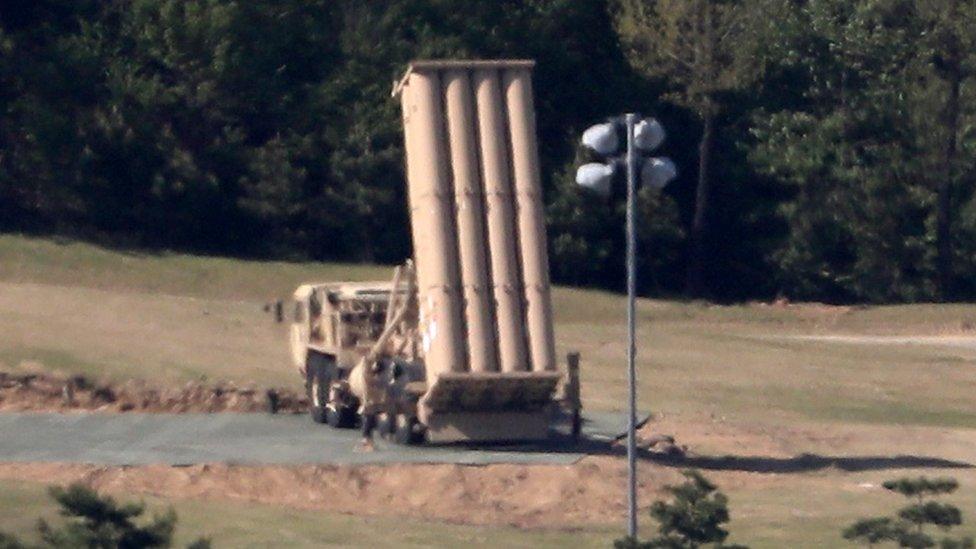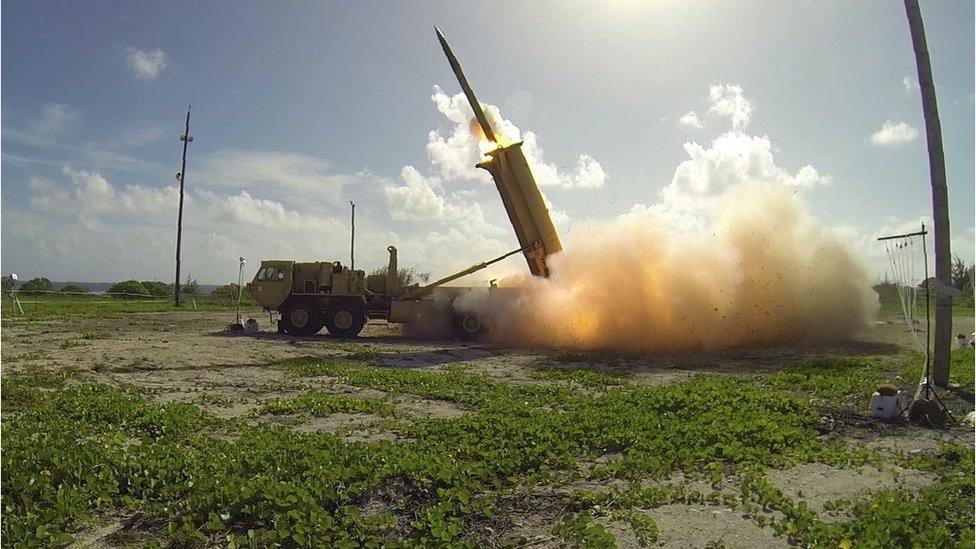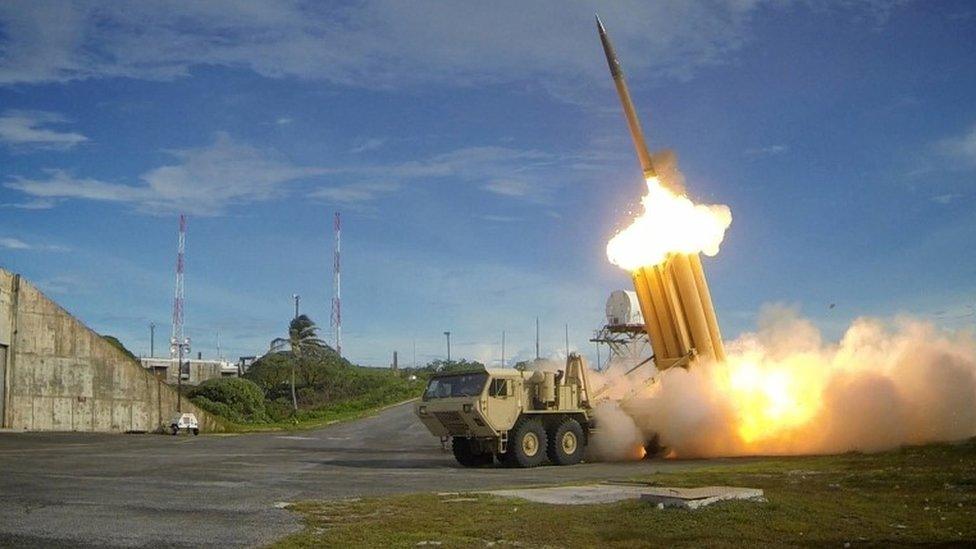South Korea halts Thaad anti-missile system rollout
- Published

Two launchers which have already been deployed will not be withdrawn
South Korea is suspending the deployment of a controversial missile defence system while the government examines its environmental impact.
The rollout of the US-funded Terminal High-Altitude Area Defense system (Thaad) may be on hold for a year.
Four recently arrived launchers will not be deployed, an official said. Two already installed will stay in place.
Thaad aims to protect South Korea from the North's missiles, and has been criticised at home and by China.

The Thaad system became operational in early May
What is the Terminal High Altitude Area Defense System (Thaad)?
Shoots down short and medium-range ballistic missiles in the terminal phase of their flight
Uses hit-to-kill technology - where kinetic energy destroys the incoming warhead
Has a range of 200km and can reach an altitude of 150km
US has previously deployed it in Guam and Hawaii as a measure against potential attacks from North Korea

The office of recently-elected President Moon Jae-in said that a comprehensive environmental study of Thaad was needed and that it could take up to a year to complete.
During that time, Thaad's deployment would be frozen as it was not "urgent enough" to bypass the assessment, it said.
Thaad began its rollout earlier this year under South Korea's previous presidential administration, a move which Mr Moon has said was "regrettable".
The suspension comes days after Mr Moon's office accused the defence ministry of withholding information about Thaad from the president.
It said the military did not tell Mr Moon about the delivery of the four other Thaad launchers.
The ministry has defended this decision, saying it had to uphold a confidentiality agreement with the US.

Many South Koreans have objected to Thaad, believing it will become a target and endanger the lives of those who live near its launch sites.
China has also voiced opposition to the system, saying it affects the regional security balance.
- Published7 March 2017

- Published2 May 2017
